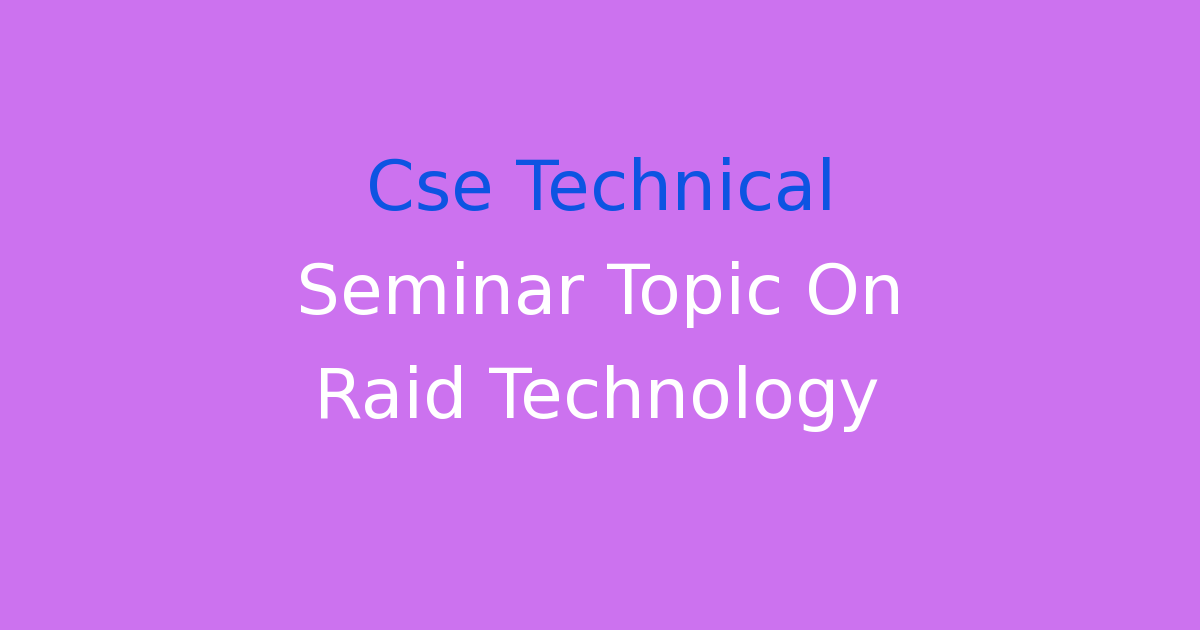Topic for the technical seminar: RAID technology in computer systems.
Introduction
The rapid growth of data storage requirements in recent years has led to the need for advanced technologies to enhance data protection, reliability, and performance. One such technology is RAID (Redundant Array of Independent Disks), which is widely used in data storage systems. In this technical seminar topic, we will explore the various aspects of RAID technology and its applications in computer systems.
Problem Statement
Traditional data storage systems face challenges such as data loss, slow performance, and limited capacity. With the increasing demand for storing large volumes of data, it is essential to have a system that can provide fault tolerance, high performance, and scalability. RAID technology aims to address these challenges by combining multiple storage devices into a single logical unit.
Existing System
In the existing data storage systems, data is stored on individual disks without any redundancy or fault tolerance mechanisms. This makes the system vulnerable to disk failures, resulting in data loss and downtime. Moreover, the performance of the system is limited by the speed of individual disks.
Disadvantages
The disadvantages of the existing data storage systems include:
- Low fault tolerance
- Poor data reliability
- Limited performance
- Scalability issues
Proposed System
The proposed system will implement RAID technology to overcome the limitations of the existing data storage systems. RAID allows for data to be distributed across multiple disks with redundancy, ensuring data reliability and fault tolerance. By using RAID levels such as RAID 0, RAID 1, RAID 5, and RAID 10, the system can improve performance, scalability, and data protection.
Advantages
The advantages of the proposed system using RAID technology include:
- Improved fault tolerance
- Enhanced data reliability
- Increased performance
- Better scalability
Features
The key features of the proposed system with RAID technology are:
- RAID 0: Striping for performance enhancement
- RAID 1: Mirroring for data redundancy
- RAID 5: Block-level striping with distributed parity for fault tolerance
- RAID 10: Combination of mirroring and striping for both redundancy and performance
Conclusion
In conclusion, RAID technology offers a comprehensive solution for enhancing data storage systems by providing fault tolerance, data reliability, performance improvement, and scalability. By implementing RAID levels based on the specific requirements of the system, organizations can ensure that their data is protected and accessible at all times. As data continues to grow exponentially, RAID technology will play a crucial role in meeting the evolving storage needs of modern computing environments.

